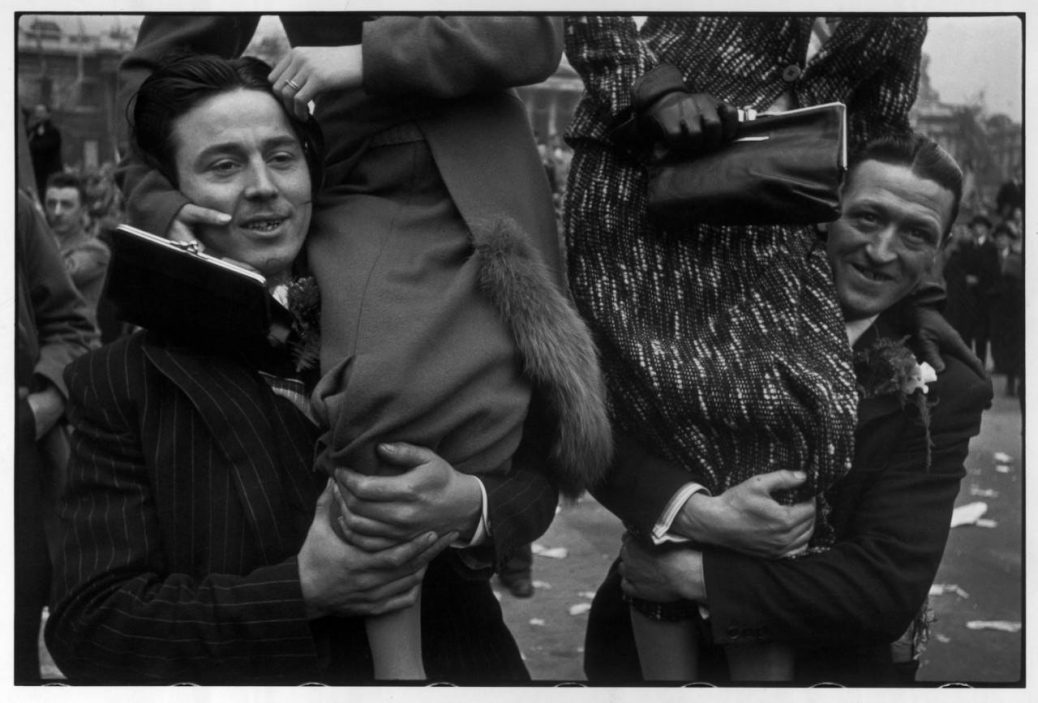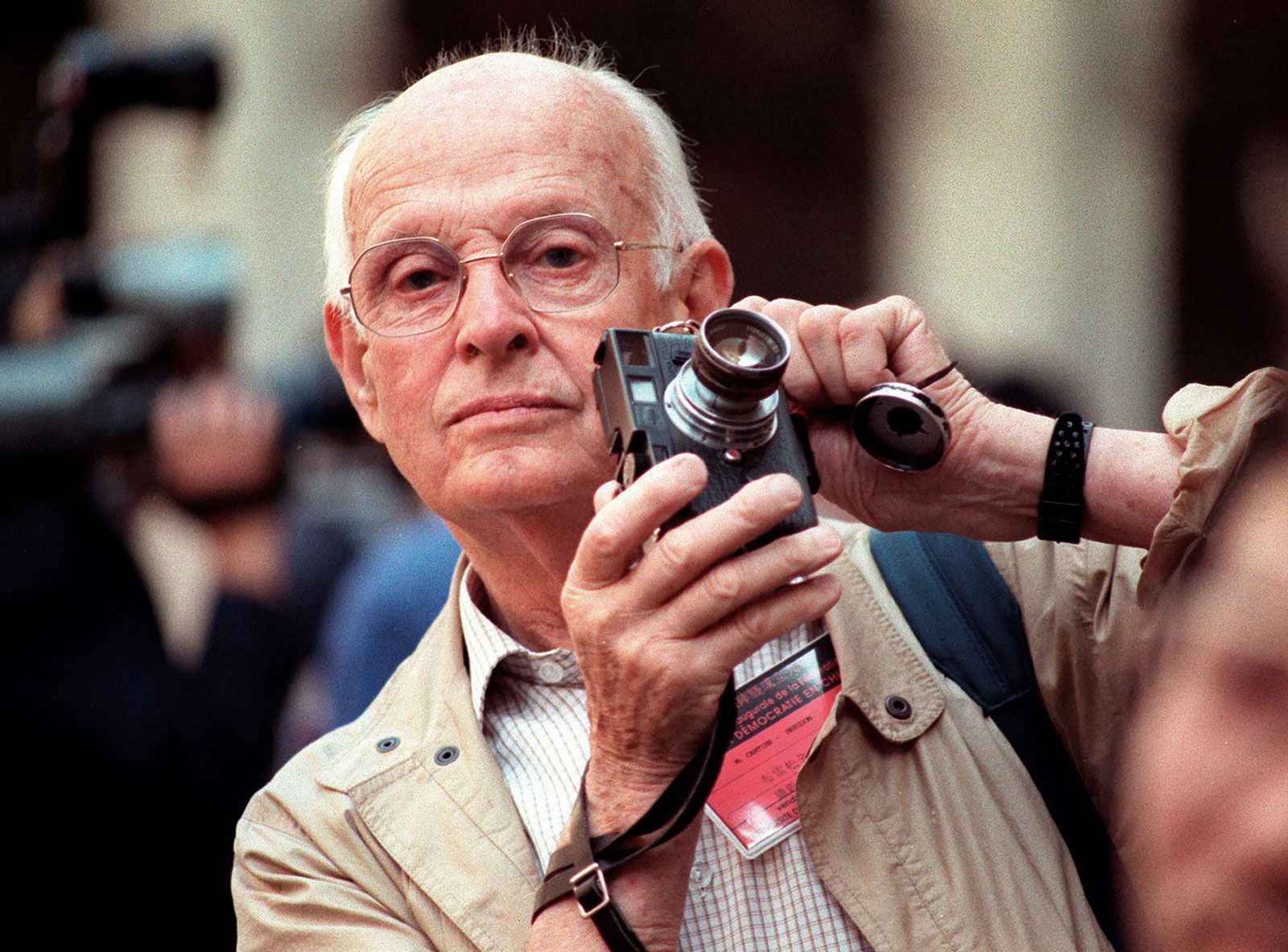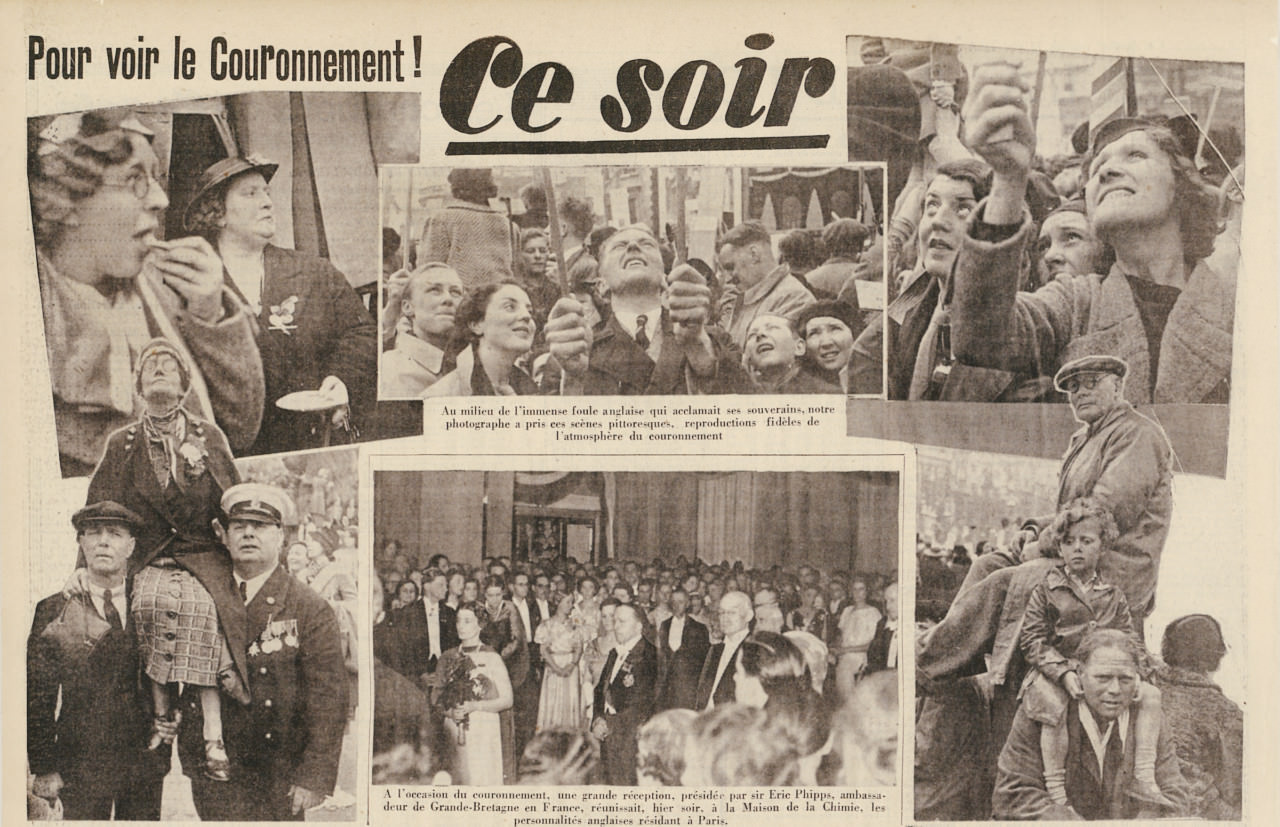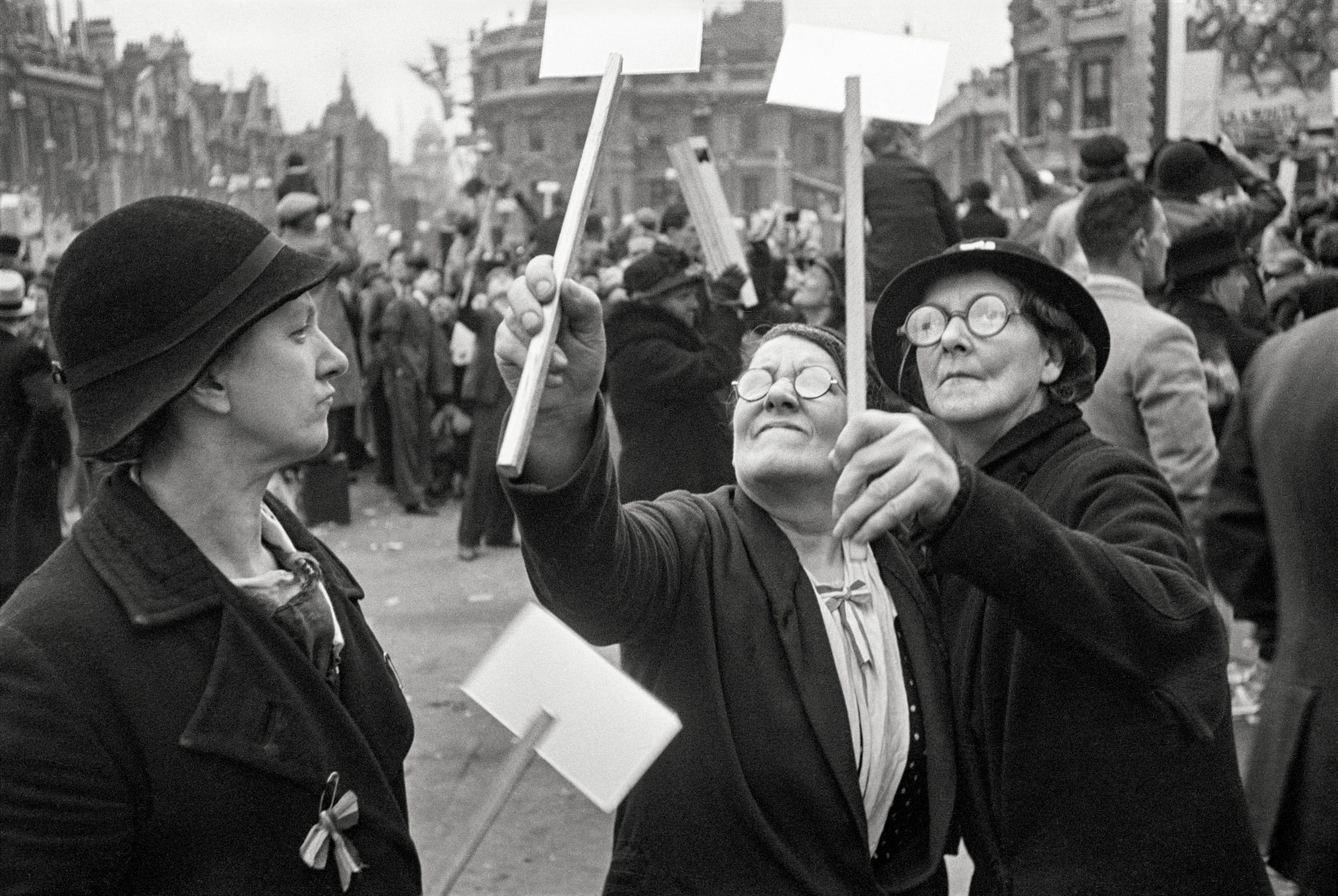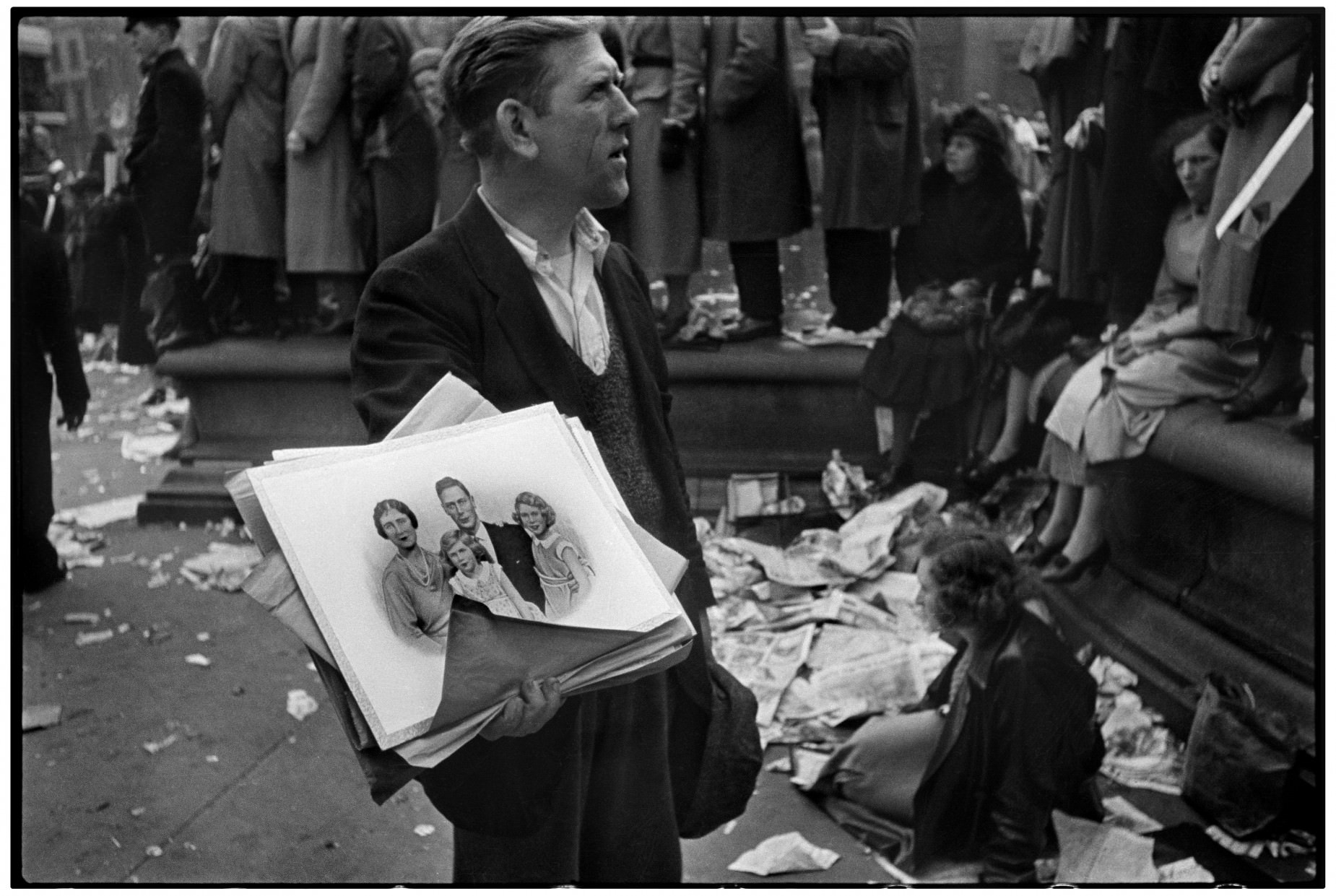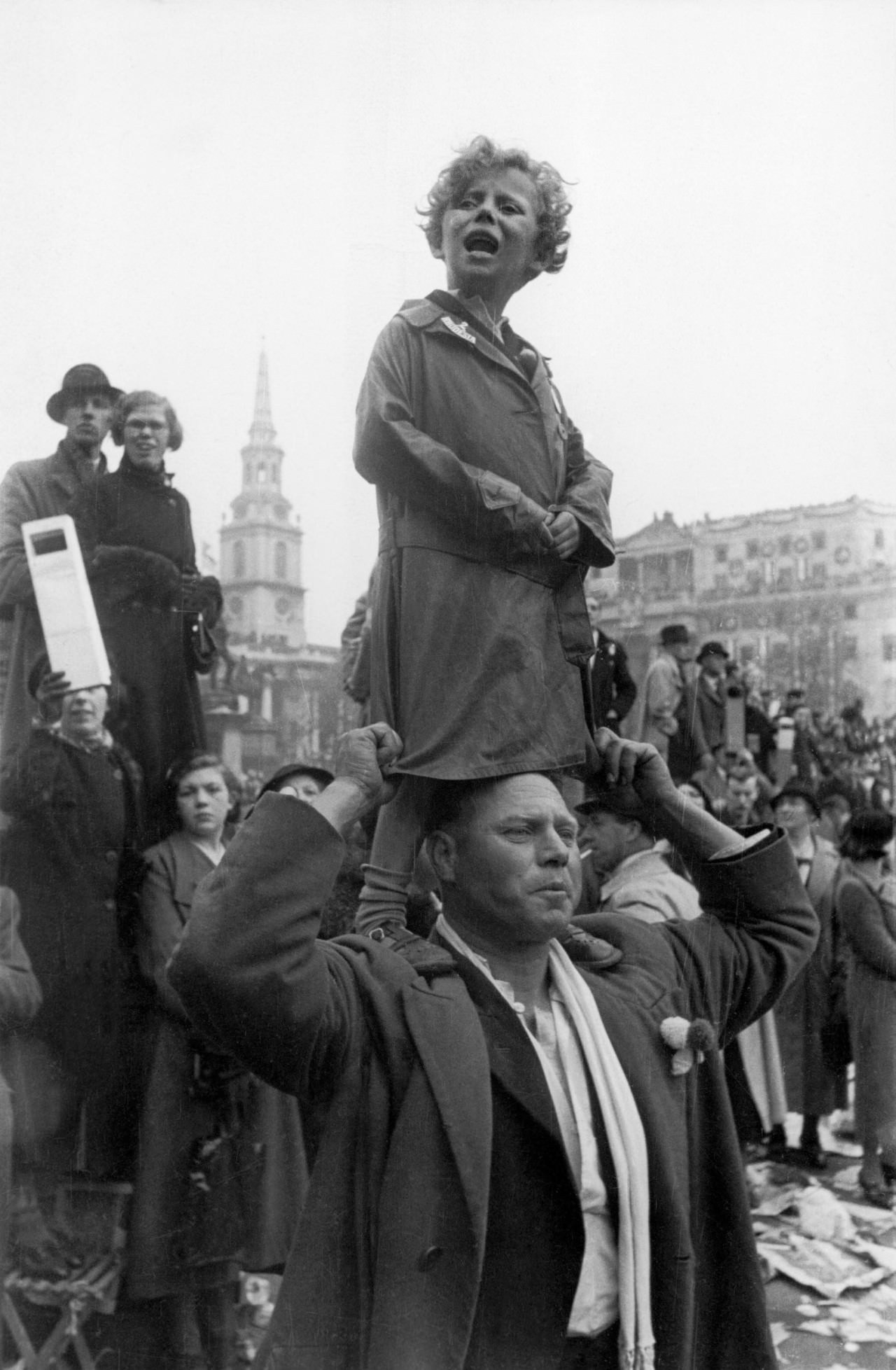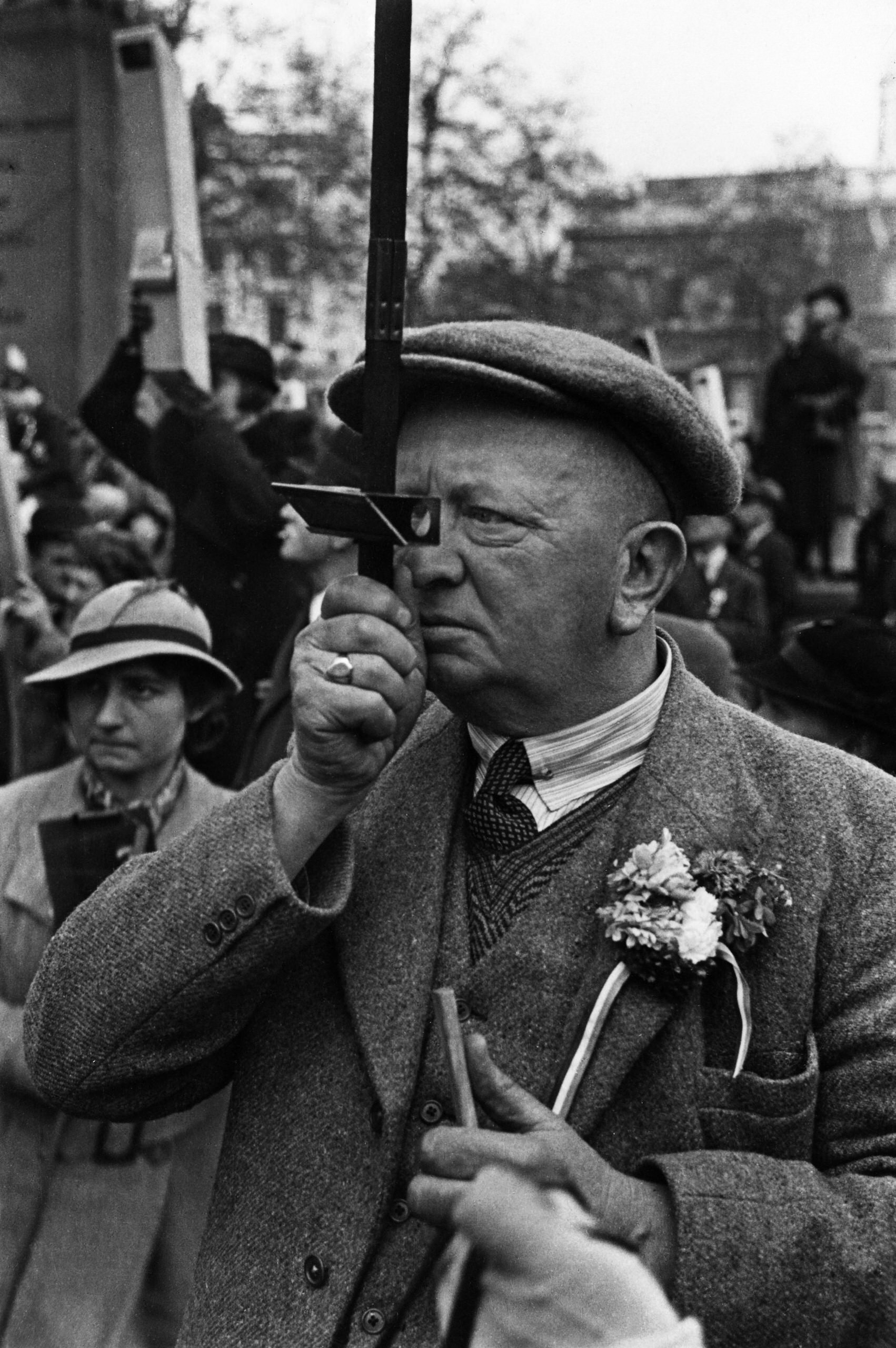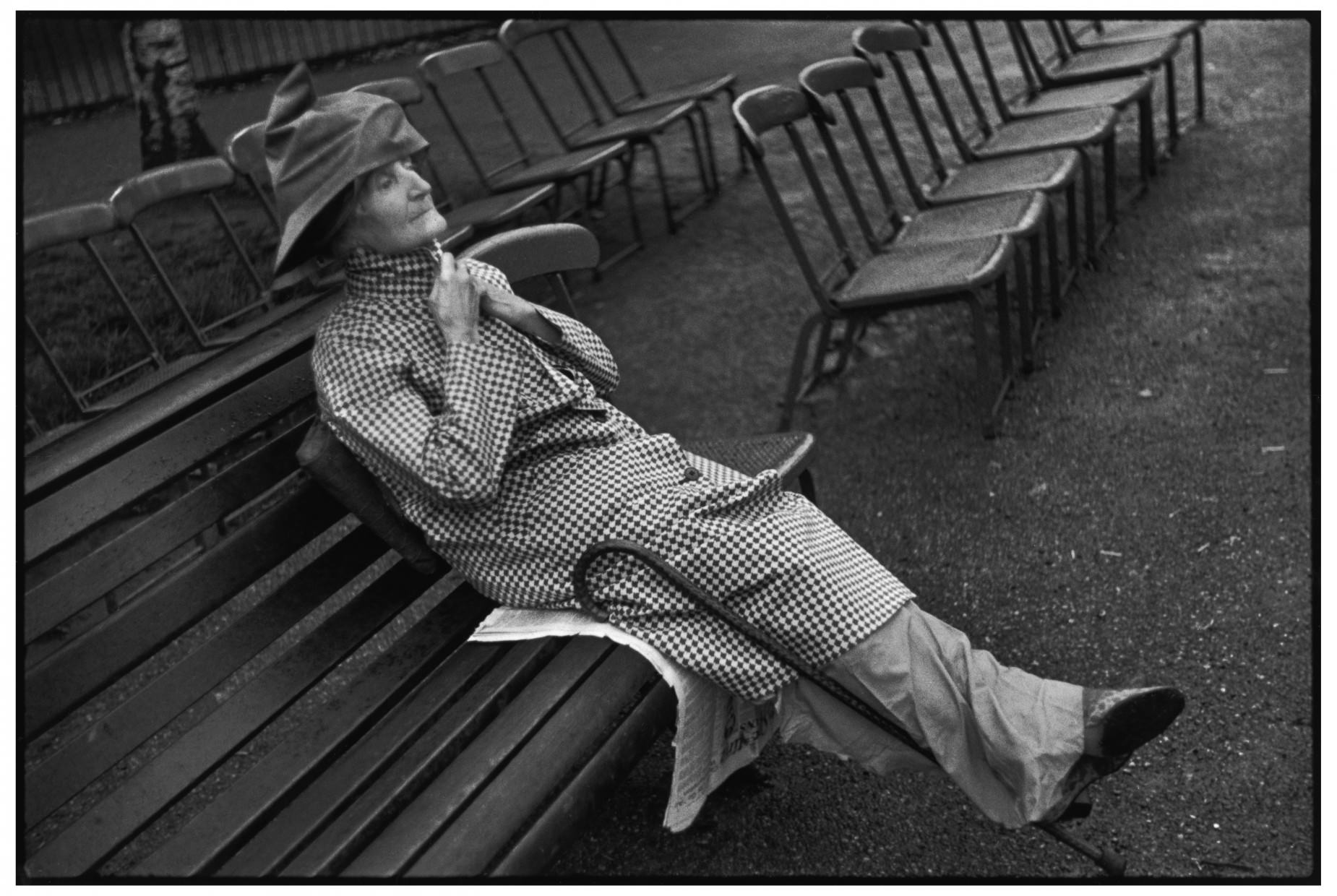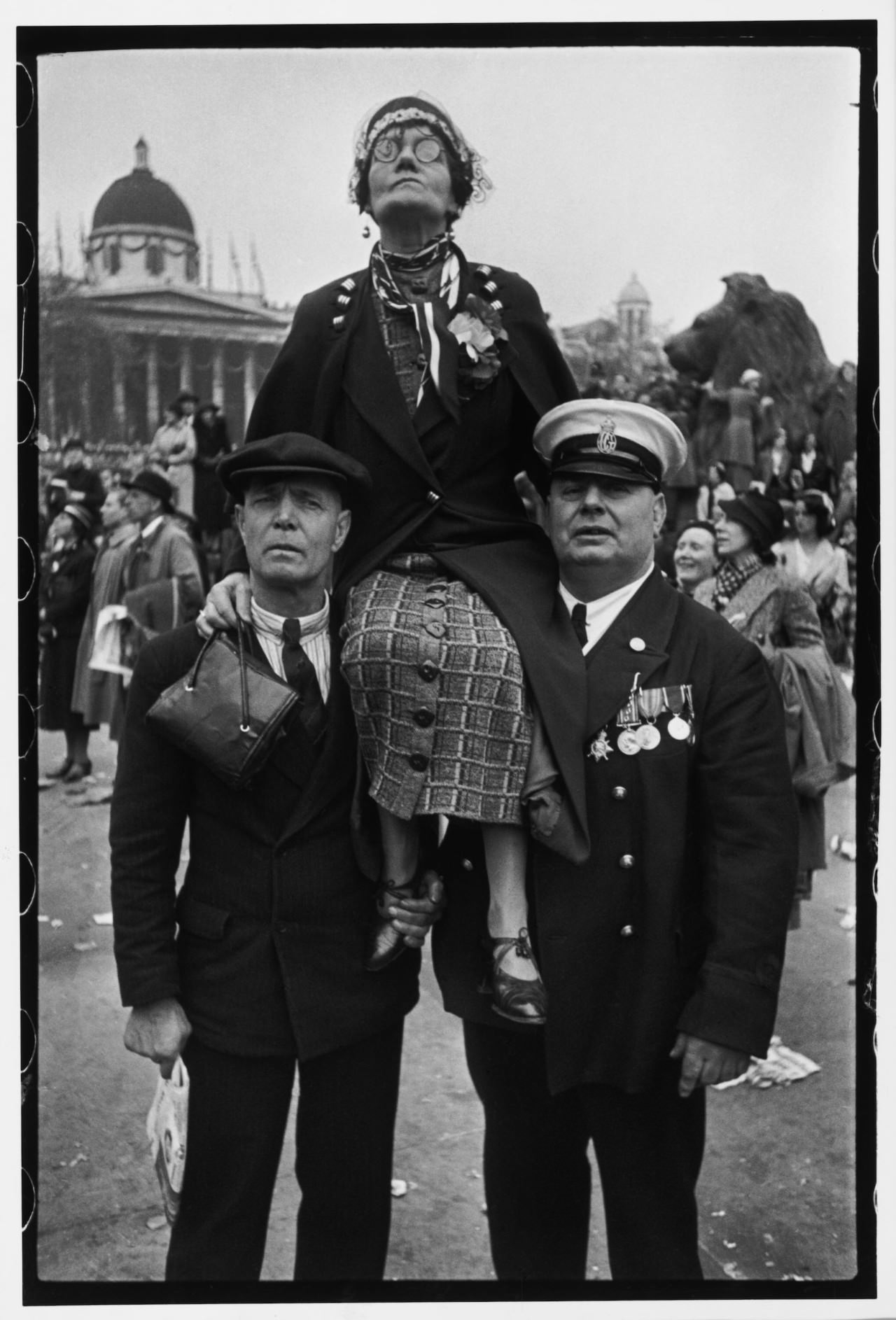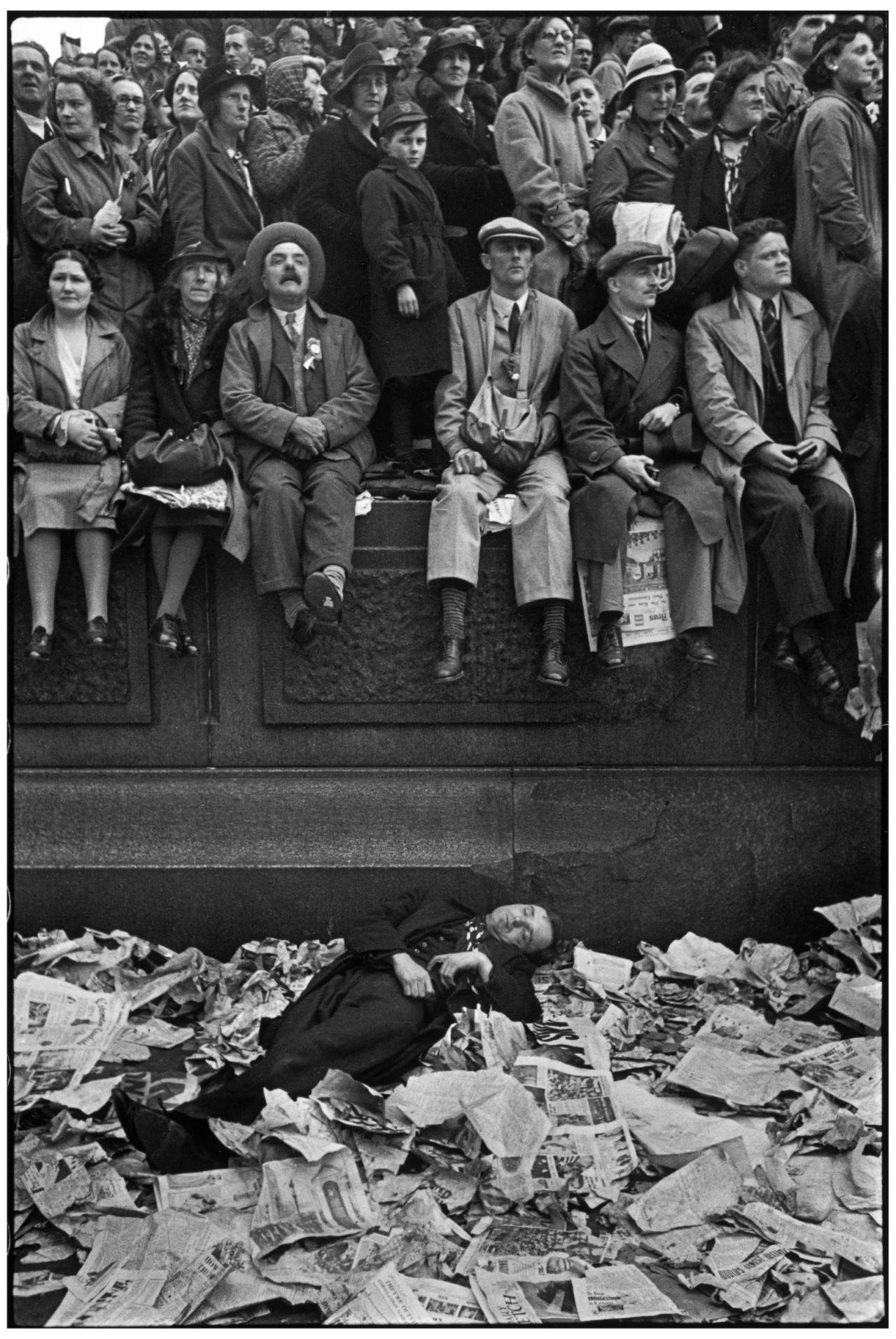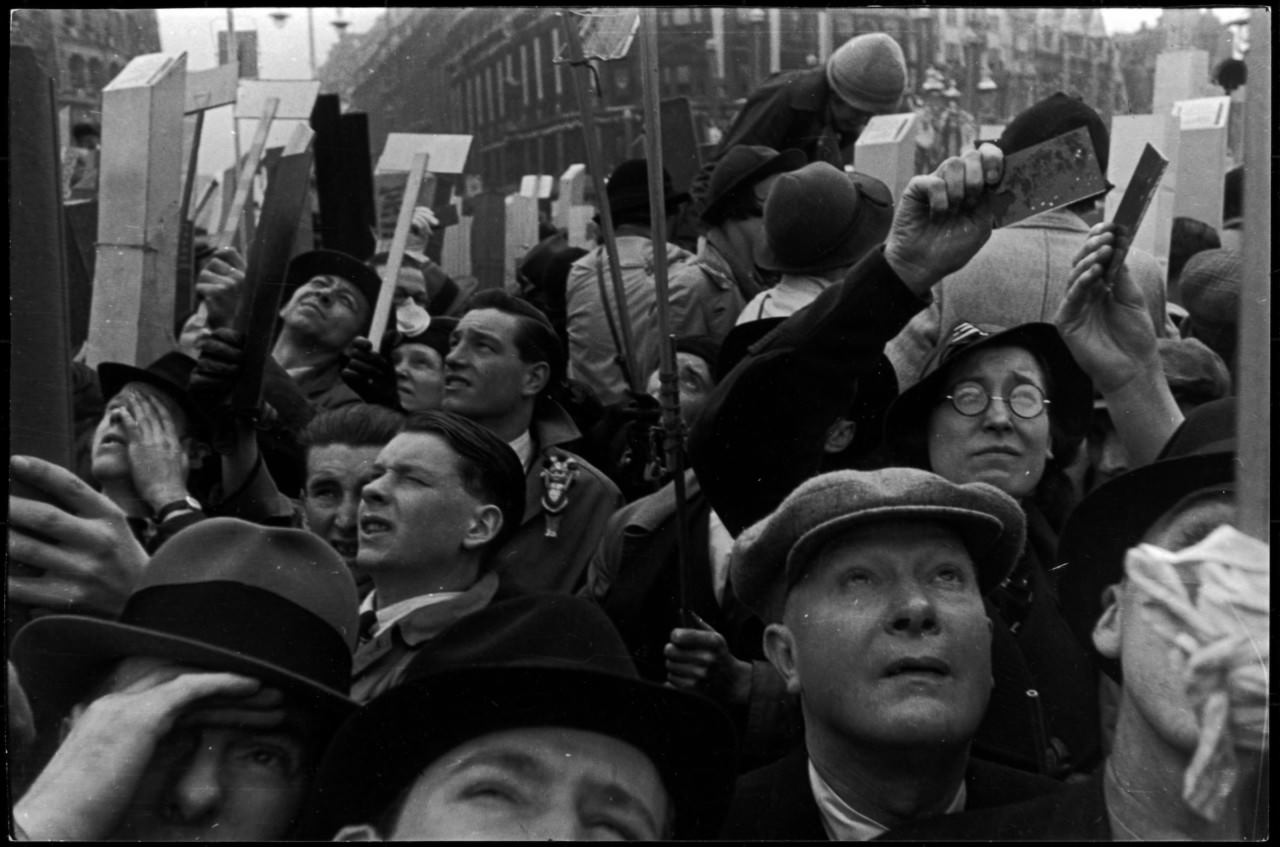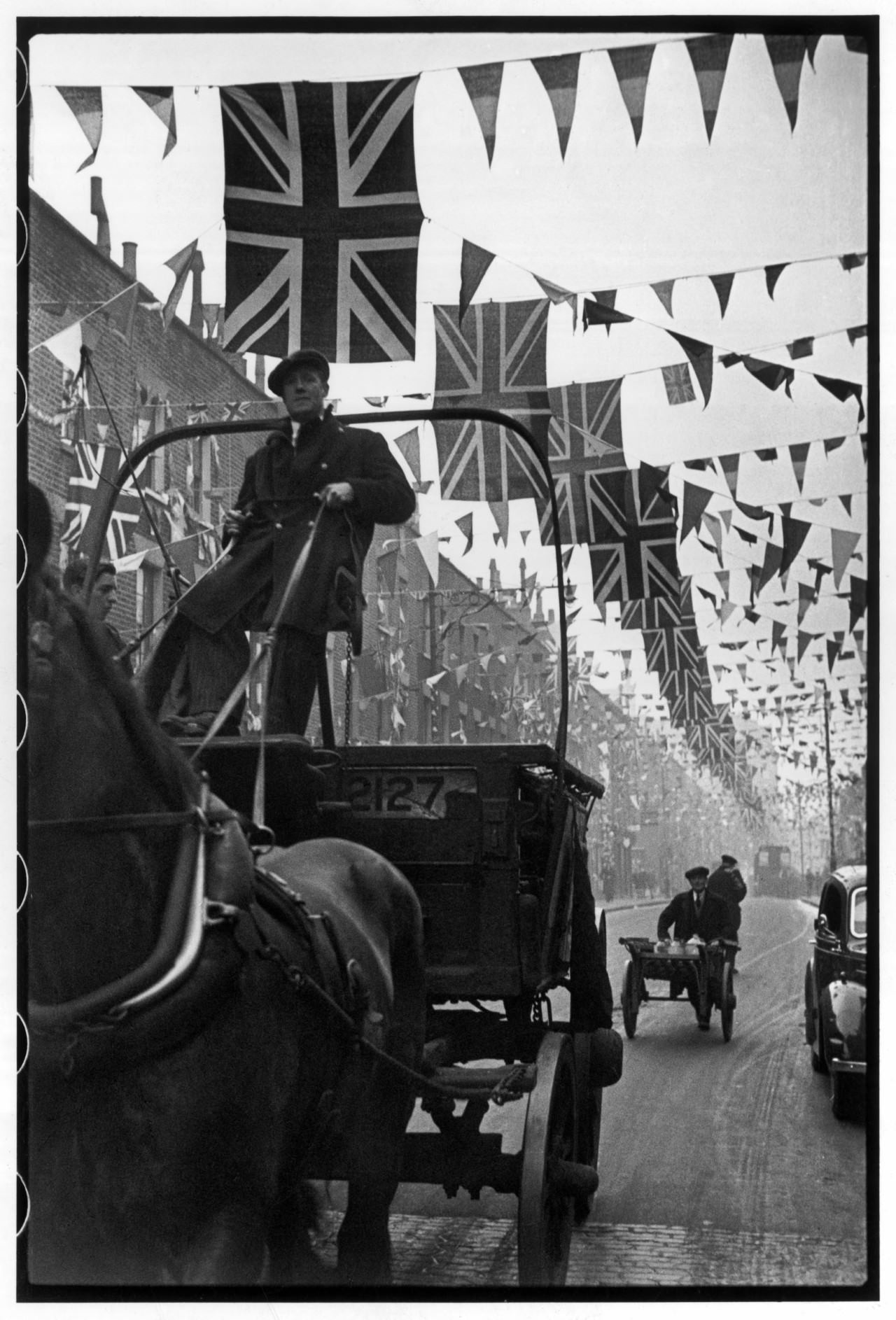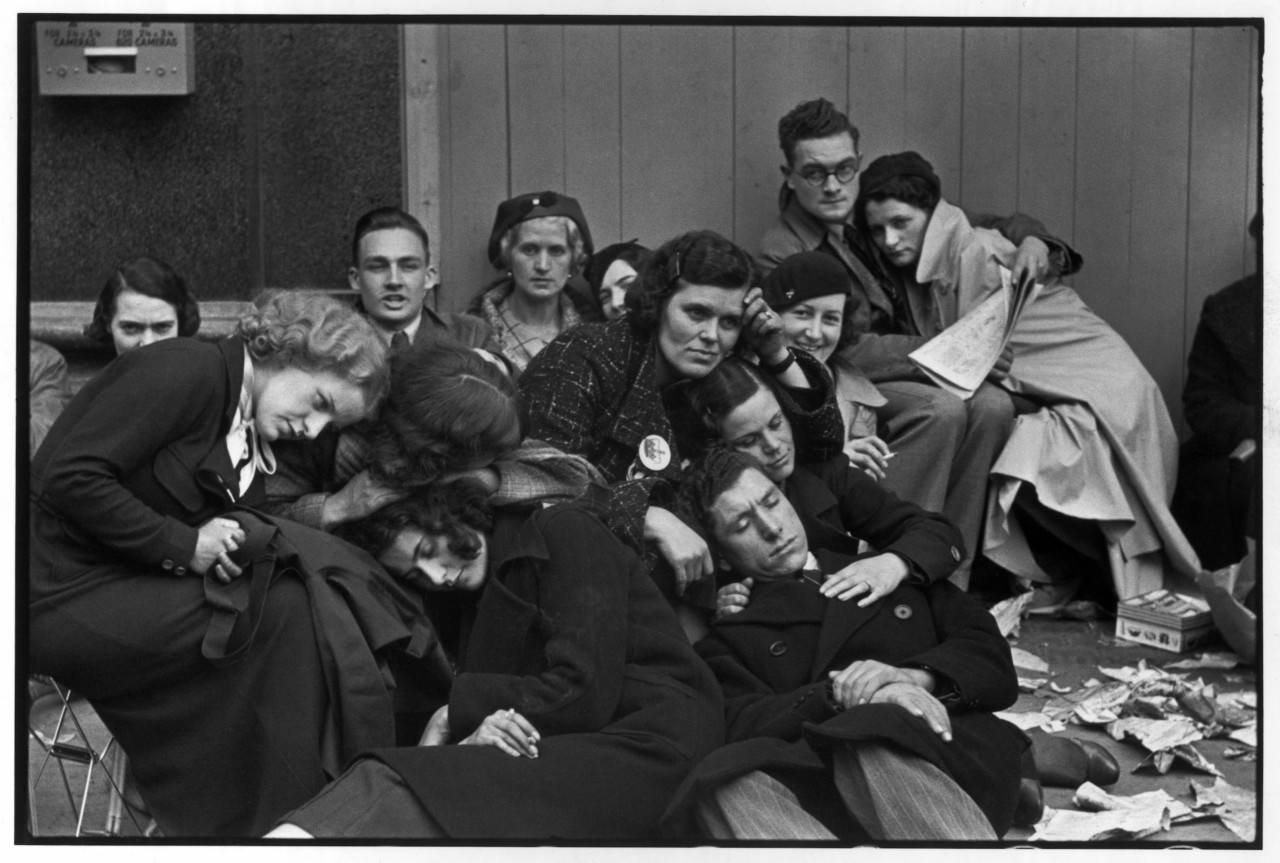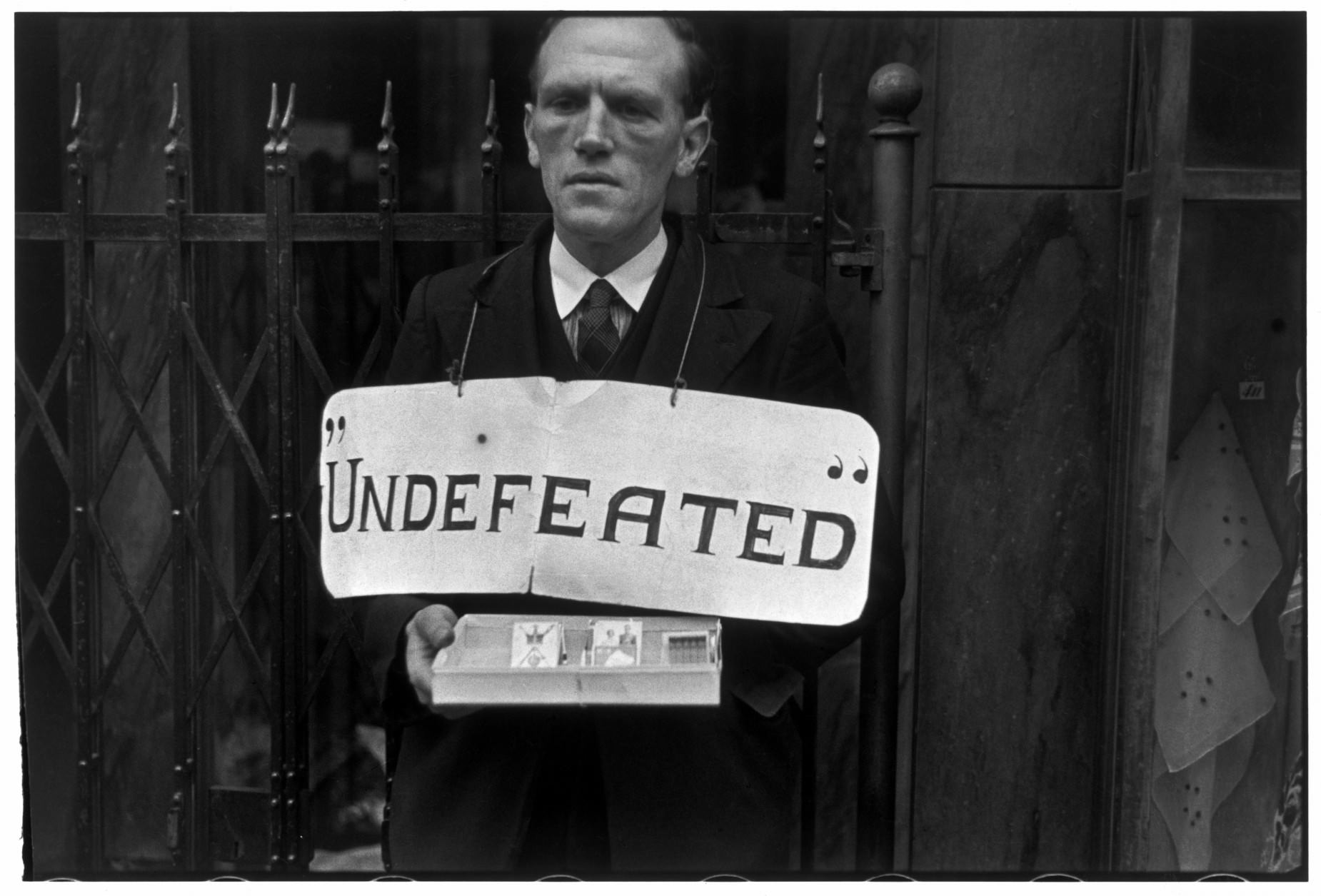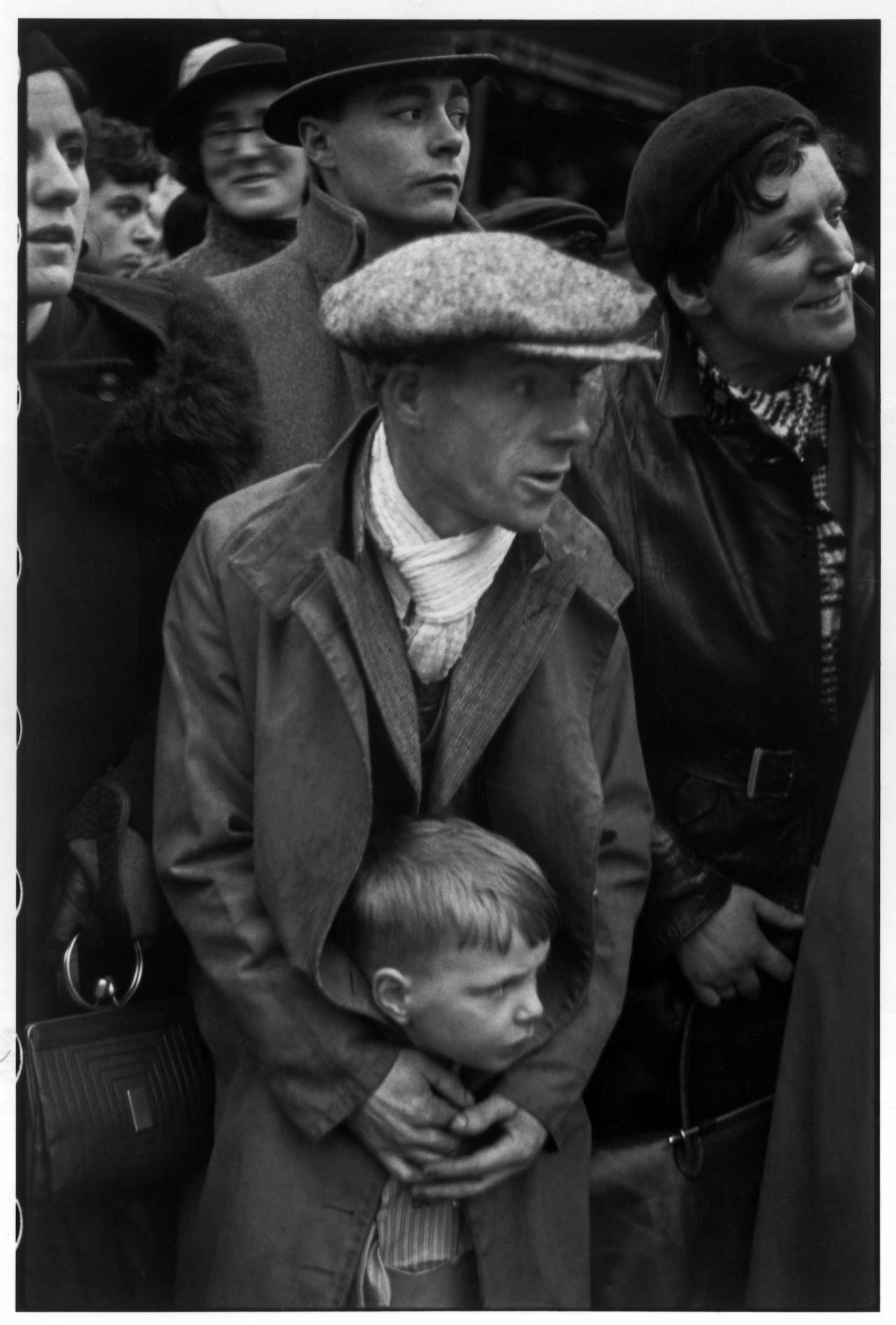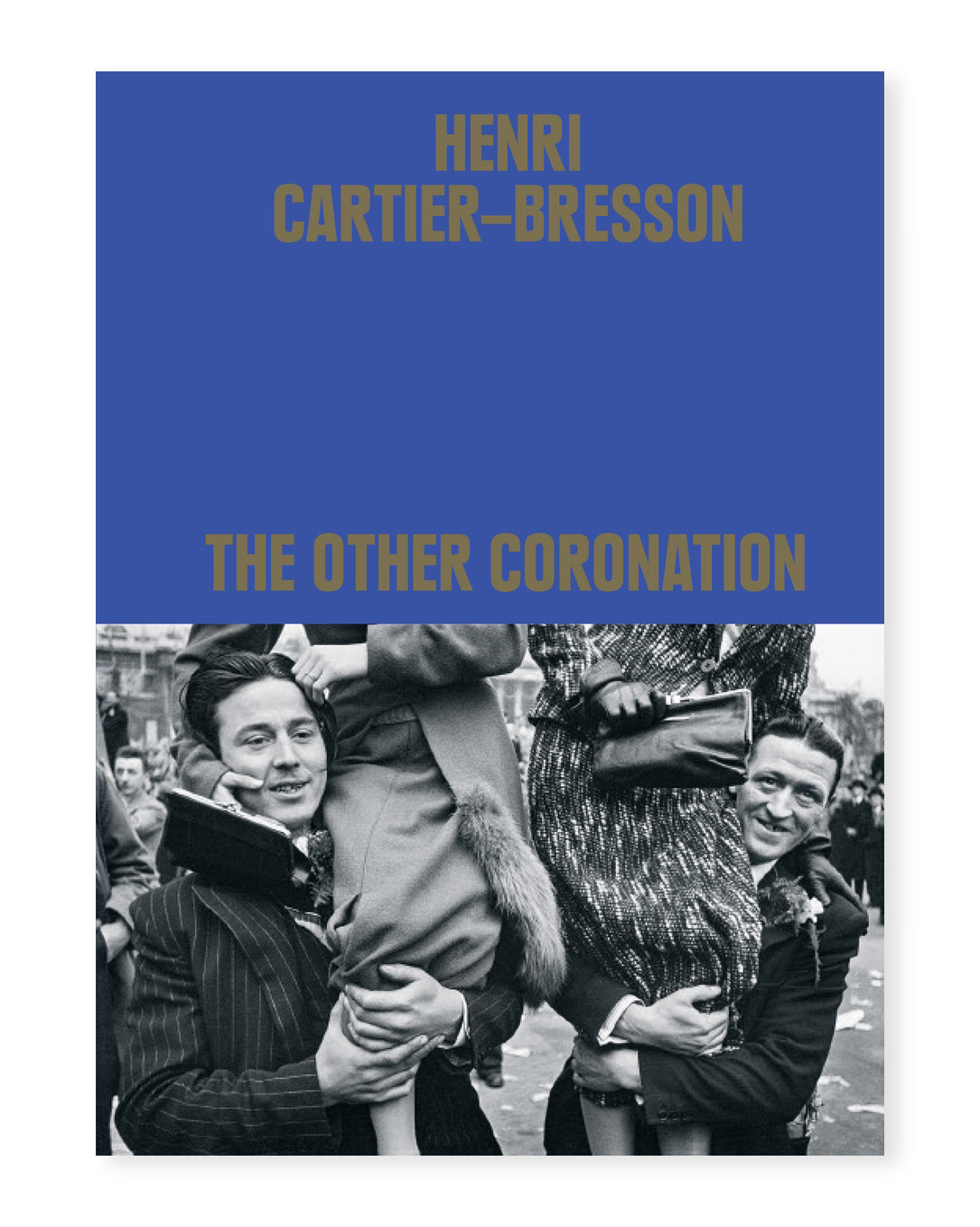Henri Cartier-Bresson: The Other Coronation
On 6 May 2023, Charles III and his wife Camilla Shand will be crowned King and Queen Consort of the United Kingdom and the other Commonwealth realms.
On this occasion, the Fondation HCB revisits Henri Cartier-Bresson’s iconic series of photographs of the coronation of King George VI in 1937.
King George VI’s coronation in London, on May 12, 1937, was one of the most newsworthy events of the interwar period. Having already spent several months working for the newly founded communist newspaper Ce Soir, Cartier‑Bresson was on site to cover the event. While most reporters were attempting to photograph the coronation ceremony, the coach’s passage, or the royal family’s emergence on the balcony, that’s not what interested Cartier-Bresson. Rather than the new King, he preferred to photograph the people watching him pass by.
Among the day’s formalities, he only retained the spectacle of a crowd of onlookers packed onto the street where the procession passed. Here, he produced striking portraits of people with their necks outstretched, finding high points for observation, or standing on the shoulders of other spectators. He was particularly captivated by the various contraptions invented to increase visibility of the event, from a simple pocket mirror to cardboard periscopes, and a rear-view mirror fixed to the end of a rod.
First appearing in Ce Soir, the series was reprinted in the Communist Party’s monthly magazine Regards, bearing the title “Those who watched…” Several reversals occur in the play of vantage points: the photographer turning his back to the King to photograph the people, and the spectators, turning around to better observe the King. Thus, reversing the direction of the gaze, Cartier-Bresson imagines a reversal of power.
The curator of the exhibition is Clément Chéroux, director, Fondation HCB.
Chéroux has taken the pictures from this assignment and put them together as an exhibition , The Other Coronation, showing until September 3, accompanied by a book that he edited, published by Thames & Hudson.
About the Author
Born in Chanteloup, Seine-et-Marne, in 1908, Henri Cartier-Bresson began studying painting at the André Lhote atelier in Paris before he turned to photography. In 1931, following a year in Africa, he purchased his first Leica.
His work was exhibited and published, first abroad and then in France, starting in 1933. He then traveled in Europe, to Mexico and the United States. Interested in filmmaking, he joined the Nykino group and collaborated with Jean Renoir in 1936 and 1939. He produced three documentaries on the Spanish Civil War in the same time period.
Taken prisoner on June 23, 1940, he managed to escape in 1943, after two unsuccessful attempts. The Museum of Modern Art (MoMA) in New York presented an exhibition of his work in 1947, the same year that he created the Magnum Photos agency, along with Robert Capa, David Seymour, George Rodger and William Vandivert. He then spent three years in the East.
Back in Europe, he published his first book, Images à la Sauvette (The Decisive Moment), in 1952. After this, he traveled on numerous occasions and devoted himself to drawing starting the early 1970s. Dubbed “l’oeil du siècle” (eye of the century), Cartier‑Bresson bore witness to the great events of the 20th century: Gandhi’s funeral in India, the last days of the Kuomintang in China, first photographs of the USSR after the death of Stalin… At his passing in 2004, he endowed the history of photography with an inimitable legacy, which is still subject to new interpretations.
Henri Cartier-Bresson: The Other Coronation
MAY 5 – SEPTEMBER 3, 2023
Henri Cartier-Bresson Fondation – Paris

